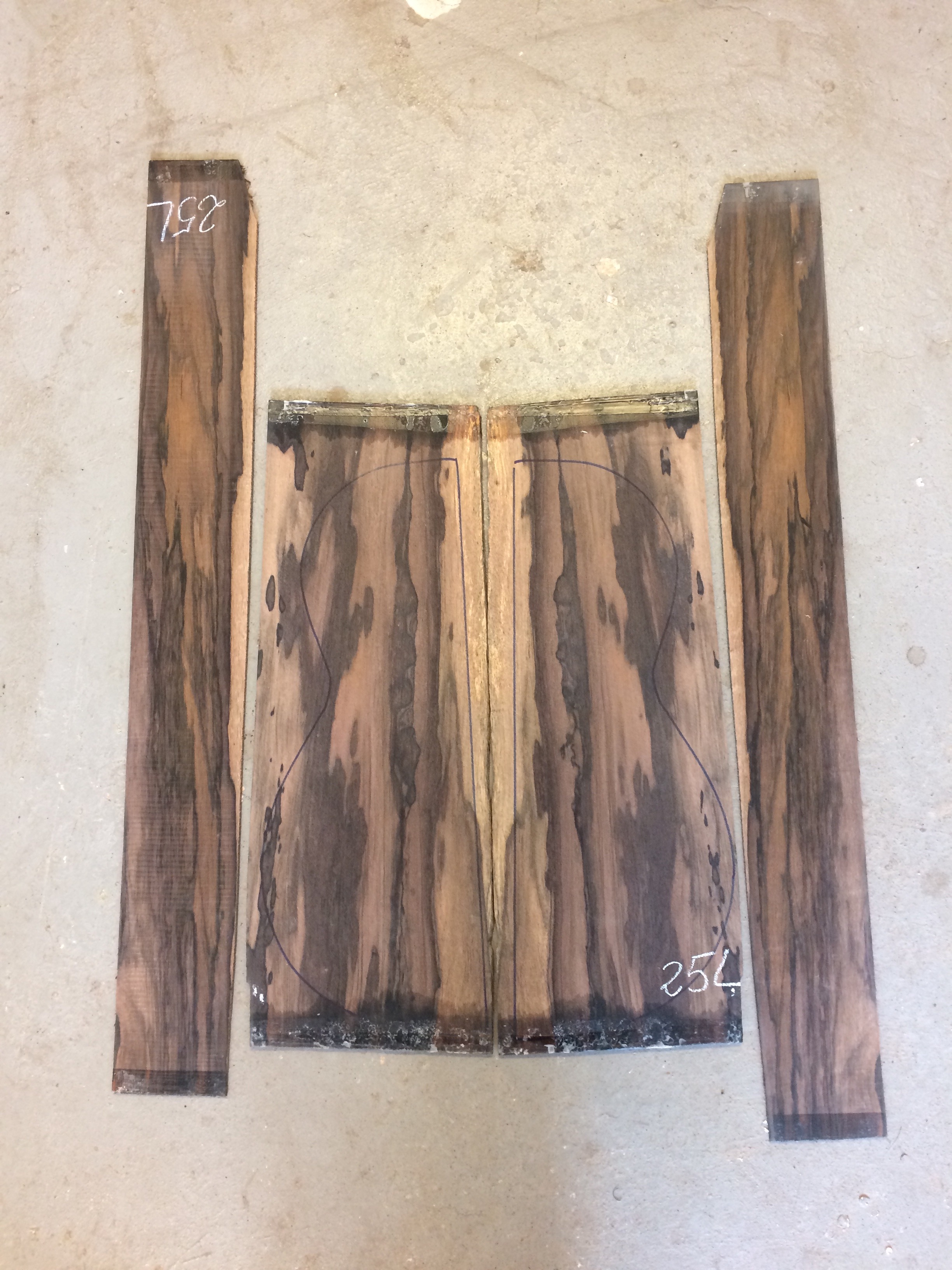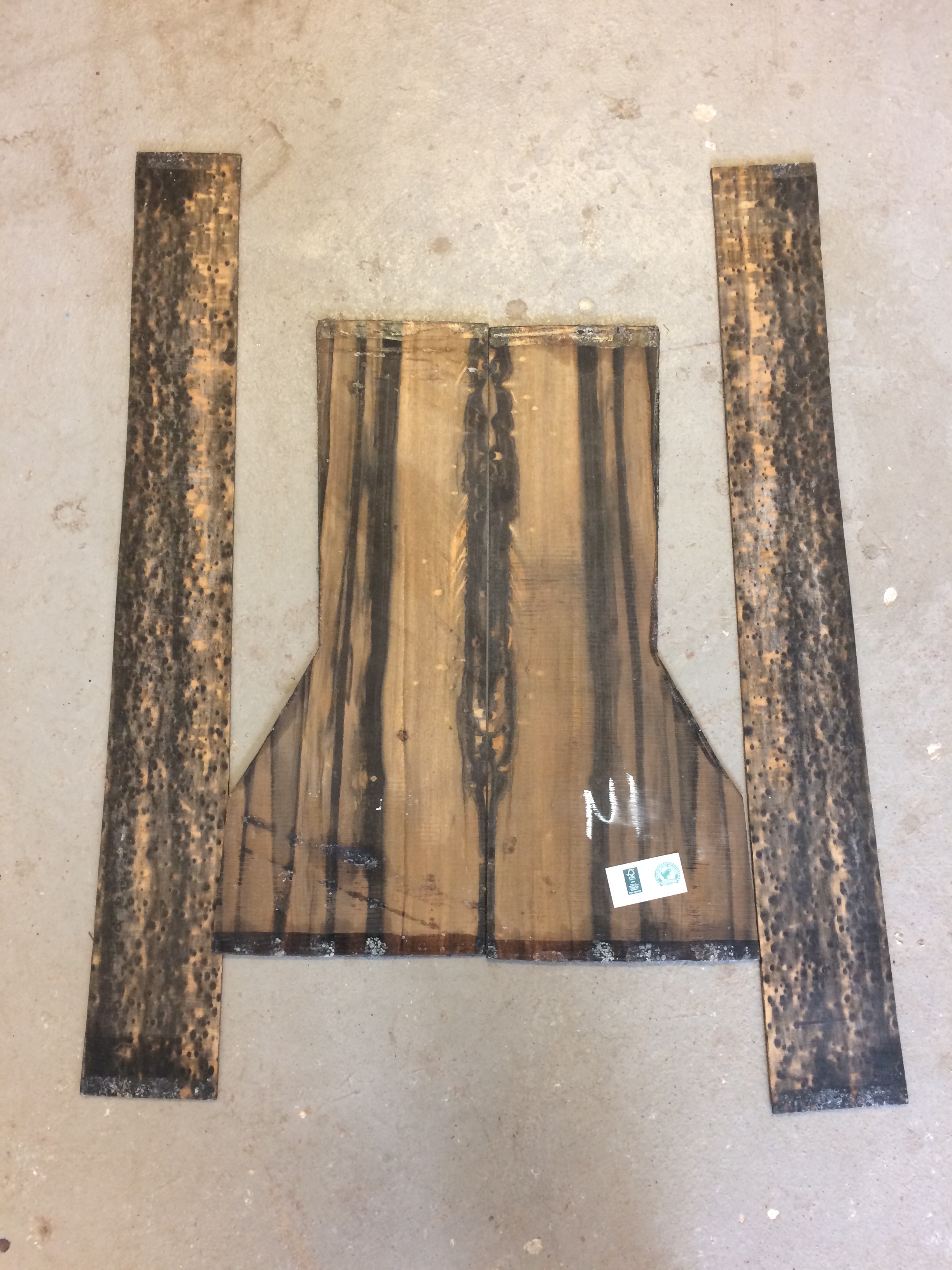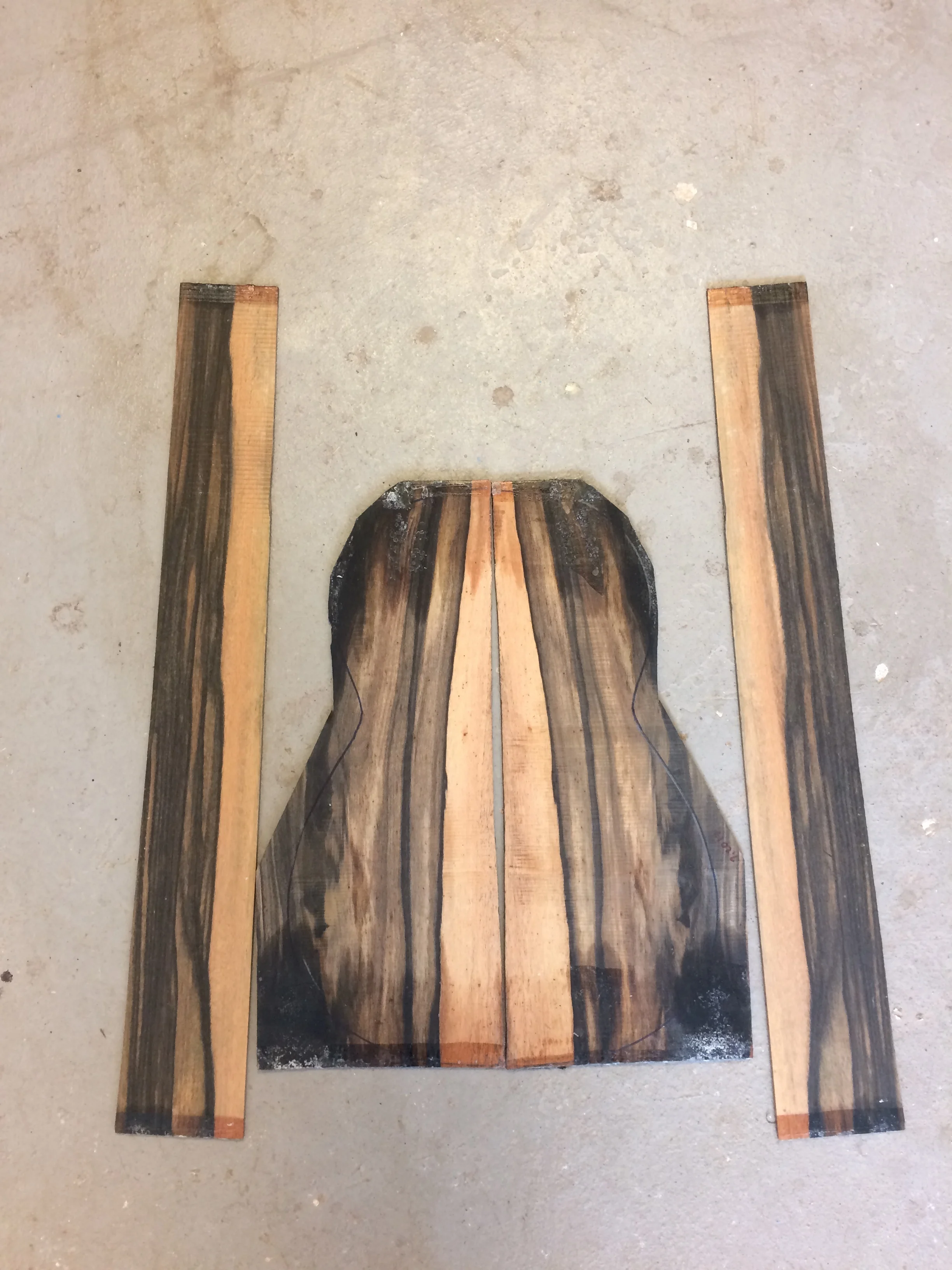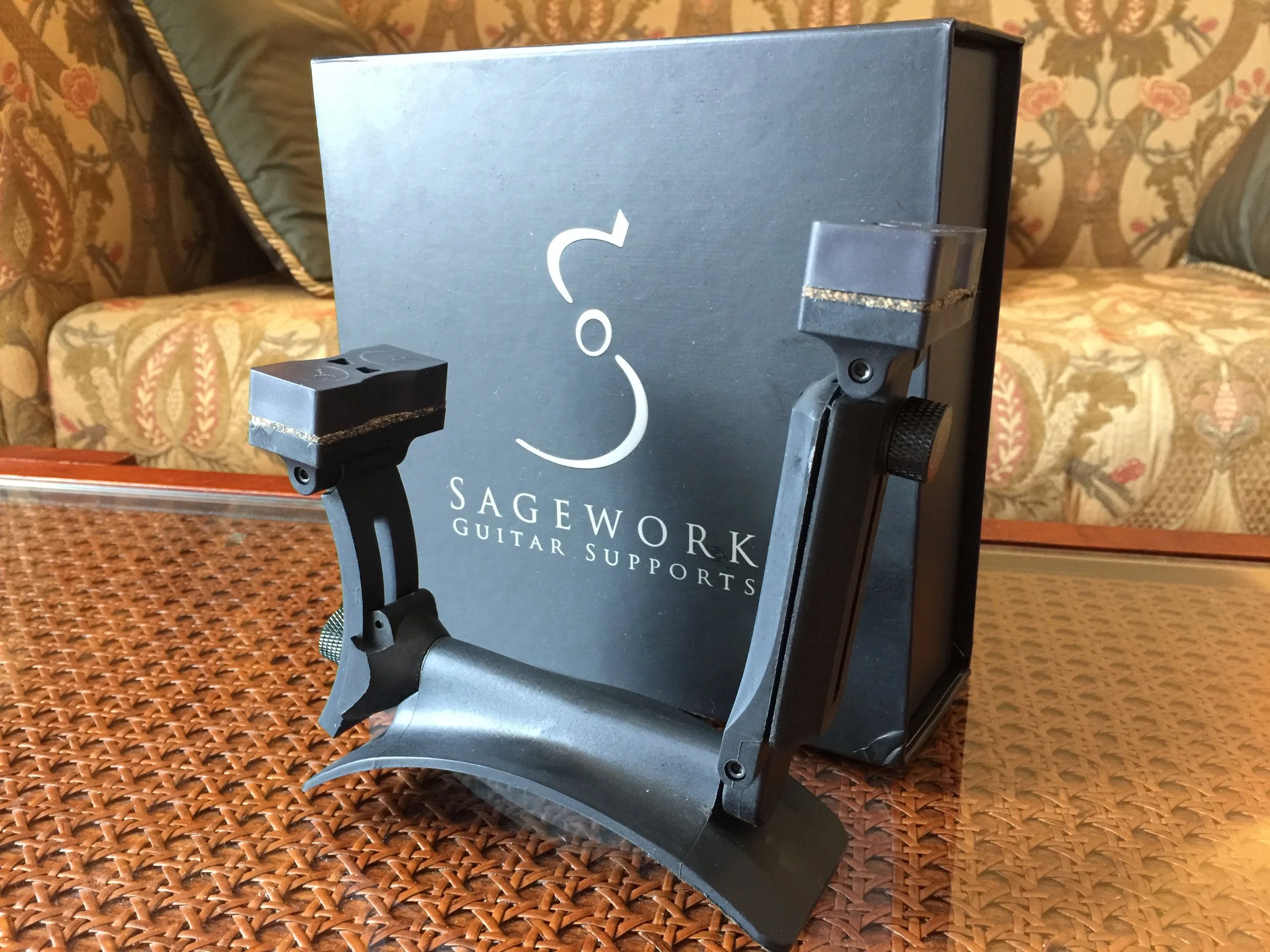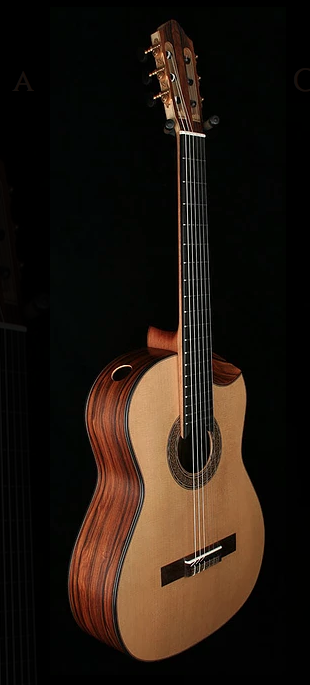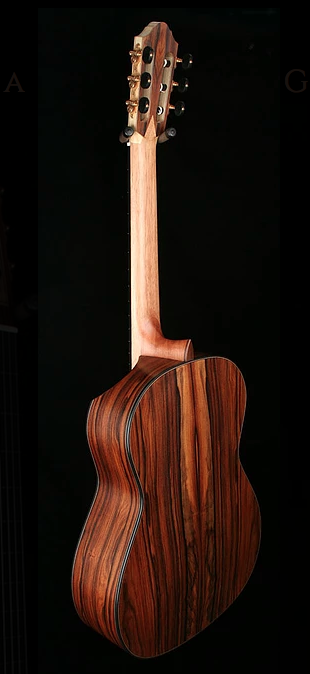My Classical Guitar Build Part 1: Choosing the wood for the back & sides
A fully customised guitar is a dream for any guitarist. I am fortunate enough to be having a custom-made classical guitar built for me by Kris Barnett with tuners by Jorg Graf, and hand-carved Maori design tuning buttons made from Pounamu (New Zealand Jade/Greenstone) by Andrew Little
Classical Guitar Wood Selection
Hi there fellow guitarists! I thought I'd take the time out from making classical and acoustic guitar lessons, sheet music & tabs, video lessons and so on to let your have a sneak preview of the guitar that is being custom made for my by Kris Barnett. Kris and I have been planning this build for over 5 years and finally it's becoming a reality.
So, welcome to Part 1 of the build where I show you the 3 choices that Kris gave me for the back and sides of my new 640mm scale length classical guitar.
Below you can see the choices I was given. Eventually I settled on the 25L which was visually the most appealing to me and to several Instagram followers that offered their opinions.
The build is expected to be finished around the middle of October 2017. However it won't be complete until the set of custom Graf tuners from Jorg Graf is ready in January. I'll be posting every week with updates about this build. You can also follow on Instagram for tasty new pics!
If you are interested in a guitar from Kris or a set of tuners from Jorg here are their details:
Let your fingers fly!
10,000 Subscribers SageWork Guitar Support Giveaway Competition
Recently our YouTube channel hit 10,000 subscribers so, to celebrate we're giving away one incredible 'Umbra' guitar support to a lucky winner. Read the blog or watch the YouTube video for competition details.
18 months after really deciding to make tutorials on YouTube the unthinkable happened - we hit 10,000 subscribers. As a celebration I'm giving away a brand new Umbra guitar support donated by Geoff at Sagework in the USA. A full review and installation video will be released within the next couple of weeks, meanwhile read on to found out how you can win one for yourself!
Competition Guidelines:
Do the following to be in with a chance to win an amazing 'Umbra' guitar support from SageWork.
- Subscribe to my YouTube channel and leave a comment about when and/or how you found the channel
- Like the NBN Guitar Facebook page and leave a comment
- Follow NBN Guitar on Instagram and use the #nbnguitar
- Head across to the SageWork website and give them some love
The more of these things you do the greater your visibility and the greater your chance of winning this wicked prize valued at US$65!
Please note there is only one Umbra guitar support available and the competition will be running until the 8th of September 2017. At that point entries will no longer be accepted and a winner will be notified by email.
Here's the YouTube video:
Let your fingers fly!
Josh
Modern Classical Guitar Design Part 2: Indented Cutaway
The 'Indented Cutaway' or 'Bevelled Cutaway' is a very new design innovation for classical guitars. Find out a little more about this newcomer to classical guitar design and which luthiers are making guitars that have this idea incorporated into their design.
Bellucci guitar with an 'Indented Cutaway' from Mangore guitars.
Introduction
Access to frets past the 12th fret has gained increasing attention from luthiers and guitarists for at least a decade. I mentioned in Part 1 of my series on modern classical guitar design that an 'indented cutaway' is a somewhat modern design feature that a few luthiers are starting to incorporate into their designs.
Standard Cutaway vs Indented Cutaway
Here are two of my own guitars showing two of the most common types of cutaway. The guitars are Takamine TNV460SC on the left and a Takamine TH5C on the right. I have two video reviews of both of these guitars that you can watch farther on in this article.
Here is a full review of my Takamine TH5C Hirade model.
The Indented Cutaway
With an indented cutaway only a small section of the soundboard, back & sides is removed. The fundamental idea is that the overall sound and projection of the guitar isn't compromised but access to the higher frets is improved. This is best shown by a picture.
One of Kris Barnett's stunning guitars featuring an indented cutaway.
As you can see the smaller cutaway leaves a significant amount of the guitars' chamber undisturbed.
Pros
- Improves access to upper frets
- Visually striking
- Has an unusual and modern look
Cons
- Has an effect on the power on tone of the instrument
- Probably not as effective as a raised fretboard
- Clearly visible departure from a standard classical guitar design
- Niche design therefore it could be difficult to resell
The same Kris Barnett guitar when viewed from the rear. As you can see the indented cutaway removed minimal wood from the guitar.
My Verdict
I'd love to try one. Sadly, I haven't had the opportunity to play a guitar with an indented cutaway for two reasons:
- Very few luthiers actually make this design
- Those that do are expensive and usually have extremely long waiting lists
I think it could be a really great feature to have on your guitar but I think I'd probably choose an elevated fretboard rather than this particularly for resale purposes.
So...where can I buy one?
Here are two luthiers that make these guitars:
Check out my other articles in the
'Modern Classical Guitar Design Series':
Part 8: Fanned Frets
Part 7: Arched back
Part 6: Double Tops
Part 5: Lattice Bracing
Part 4: Armrest
Part 3: Soundports
Part 1: Elevated Fingerboard


